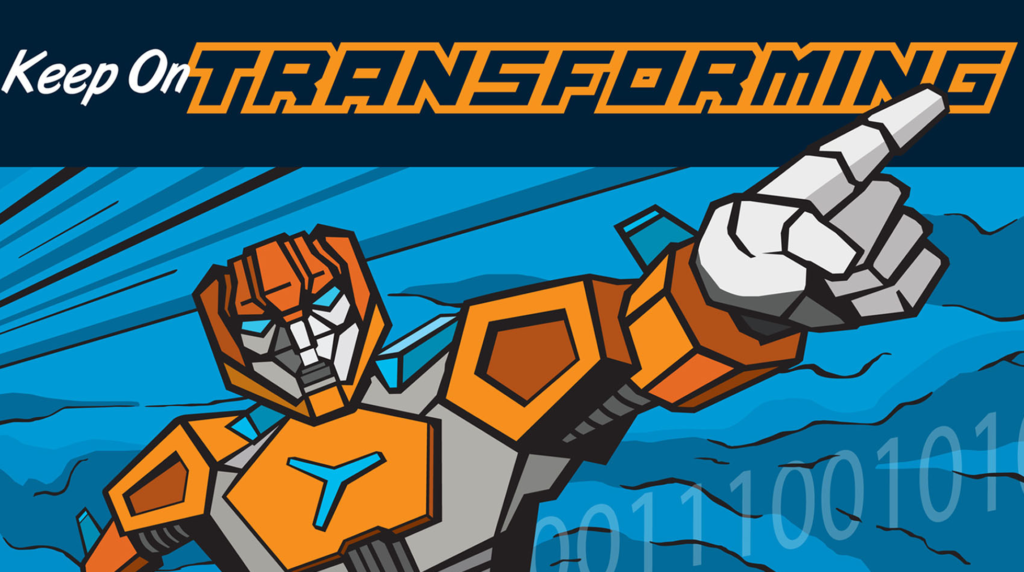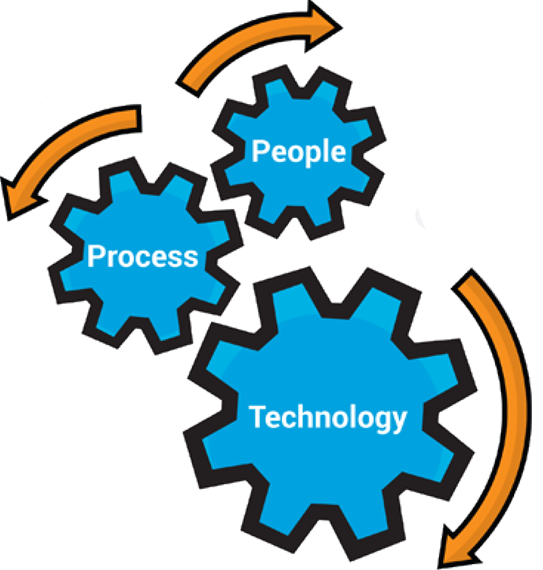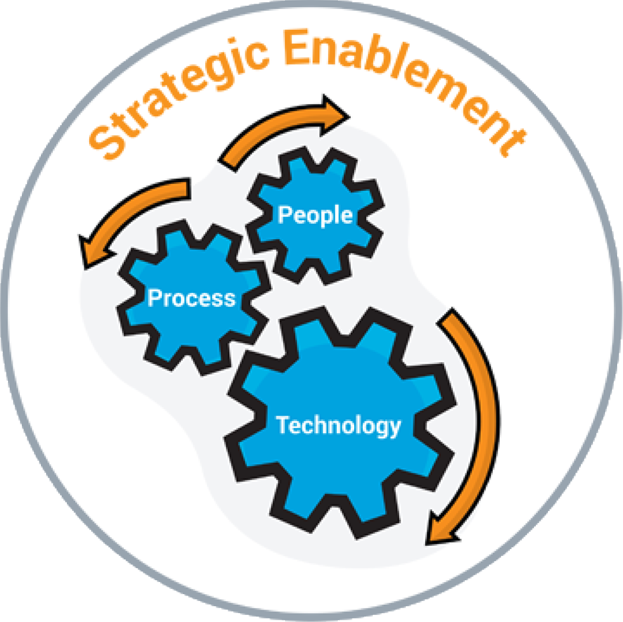
Continuum’s recent article Transforming the Transformers lays out the framework for understanding how the world’s most technical innovators adjusted and thrived in 2020, and what transformations will look like in years to come. (If you haven’t read it yet, it’s definitely worth your time!)
So, what are these “Digital Transformers” doing differently from an empirical and data-driven perspective in 2021 and beyond?
In answering this question, one quickly realizes the magnitude of just how much behavioral and learning science has to do with what is happening in IT today. Running to research, like any good consultant and analyst, I began to see the patterns line up.
Digital Transformers possess these key things and there’s TONS of science to prove it:
1. Flexibility with a Laser-Focus on Productivity
Achieving flexibility without sacrificing productivity requires broad transformation from people, process, and technology.
Digital Transformers know that rapid innovation is necessary and look at people, process, and technology as interwoven “innovation gears.” Understanding that radical transformation cannot be accomplished without looking at and better operationalizing these three innovation gears, Digital Transformers are more flexible in their thinking than ever.

Behavioral science and market research has long known the power of the mindset. And Transforming the Transformer hits this right on the head, that the reason for this was more mindset and process-related than technology restriction. Digital Transformers were already in a transformation mindset. Their strict static operational processes had already come into question and were often more malleable as a result. In short, their teams were ready to embrace change.
A MINDSET FOR CHANGE.
Digital Transformers innovate through the lens of taking good to great.
That is, business model and mindset innovators do not necessarily discover net-new products or services. Instead, these Digital Transformers redefine the impact or influence of existing product
or service and, equally as important, how those product or services are distributed to capture new
market share
As research shows, flexible thinking paired with a laser focus on refining ‘goodness to greatness’ – that is, not sacrificing for the sake of innovation – is the key to revolutionary innovations.
There’s no doubt Digital Transformers continue to transform due to the attention they give their “innovation gears” paired with their obsession for the better.
So, what’s the take-away? Consider your people (internal and external!), processes, and technology. How are you refining these three innovation gears in your organization to drive good to great?
2. Key Habits Create Explosive Innovation
“With inertia working to their advantage, the Digital Transformers began transforming… again. The process for change was familiar to staff, and the transformative tools in place gave the staff a forwardlooking stance far removed from previous reactive static processes. That stance kept staff looking for incremental improvements with an eye towards larger initiatives.” Continuum, Transforming the Transformer
Habits are built out of rewards and exposure. That is, the more an organization is exposed to and
immersed in a culture of innovation, agility, and productivity, the more likely they will create those
habits. Digital Transformers are innovation and productivity habit machines.
We know from learning principles and behavioral psychology that once a behavior or habit is formed, it can then be generalized across environments, people, and situations. This is exactly what Digital
Transformers do best—that is, compound well habits into scaled innovation ecosystems. And with the habits of innovation and process already built into the Digital Transformer’s foundation, they are empowered by the inertia of an established “muscle memory” of innovation.
And we know, practice does really make perfect. Studies have shown that deliberate practice is a
strong overall predictor of success. So, in a sense, Digital Transformers are cashing in on the compound interest of being innovative habit machines.
Key take-away here, start innovating! Innovation breeds innovation, and it’s no surprise this is how the Digital Transformers are still transforming.
3. Constantly-Learning Talent Drives Transformation

Behavioral science and market research has long known the power of the mindset. And Transforming the Transformer hits this right on the head, that the reason for this was more mindset and process-related than technology restriction. Digital Transformers were already in a transformation mindset. Their strict static operational processes had already come into question and were often more malleable as a result. In short, their teams were ready to embrace change.
The next round of Digital Transformers has the unique opportunity to leap-frog large swaths of incremental steps and do so with less risk than the trailblazers had at each individual step.
Digital Transformers are artful at learning from themselves and everyone (and thing) around them. Digital Transformers are continuing to transform because they are obsessed with learning.
As perhaps best put by Harvard Business Review, digital transformation is about talent, not technology. And so, what is Digital Transformers doing to keep innovating and transforming the world as we know it? According to HBR, “just as digital transformation is more about people rather than technology; the key technological skills are soft skills rather than hard skills.”
Digital Transformers are investing in soft skills.
We see this at Continuum constantly right now. Our clients include some of the world’s largest companies, and what do they all have in common right now? They are investing in solution-focused, business-relevant skills that will create a broader understanding of the possible. In fact, our course “Sales Skills for Technical Types” sells out regularly.
Digital Transformers keep their innovation gears moving through strategic enablement; a go-to-market strategy that aligns internally and externally.
Digital Transformers will continue to focus on outward education as well. That is, Digital Transformers will continue to transform but have an equal focus on educating their consumers, partners, and the market at large.
Today’s learner requires information that is quickly applicable and progressively builds on itself. Research shows that digital campaigns are more powerful than ever to influence targeted markets. Digital Transformers know this well and capitalize on it.
Moreover, Digital Transformers know they must align their external messaging with their internal messaging. Launching well-aligned messaging at scale is when true revolutionary shifts begin. Look at any meaningfully impactful campaign, and you’ll see synergy at scale all over it. So, what’s the final takeaway? Get smart about your enablement strategy. Focus on business relevance, targeted and thoughtful metrics, and synergistic messaging streams. If you want to knock it out of the park, scale your enablement efforts by assigning key internal folks or leveraging a skilled partner.
SOURCES:
Transformation Continuum (2021, February 19). Transforming the Digital Transformers. Retrieved April 08, 2021, from https://transformationcontinuum.com/transforming-the-digital-transformers/
Becky Frankiewicz and Tomas Chamorro-Premuzic. “Digital Transformation Is About Talent, Not Technology.” Harvard Business Review, 7 May 2020, hbr.org/2020/05/digital-transformation-is-about-talent-not-technology.
Flavin, Michael. “Markides (2006) Revisited.” Disruptive Technology Enhanced Learning, 26 June 2012, idcharred.wordpress.com/2012/06/26/markides-2006-revisited.
Rice University. “Does Practice Really Make Perfect?” ScienceDaily, 16 July 2014, www.sciencedaily.com/releases/2014/07/140716123835.htm.

